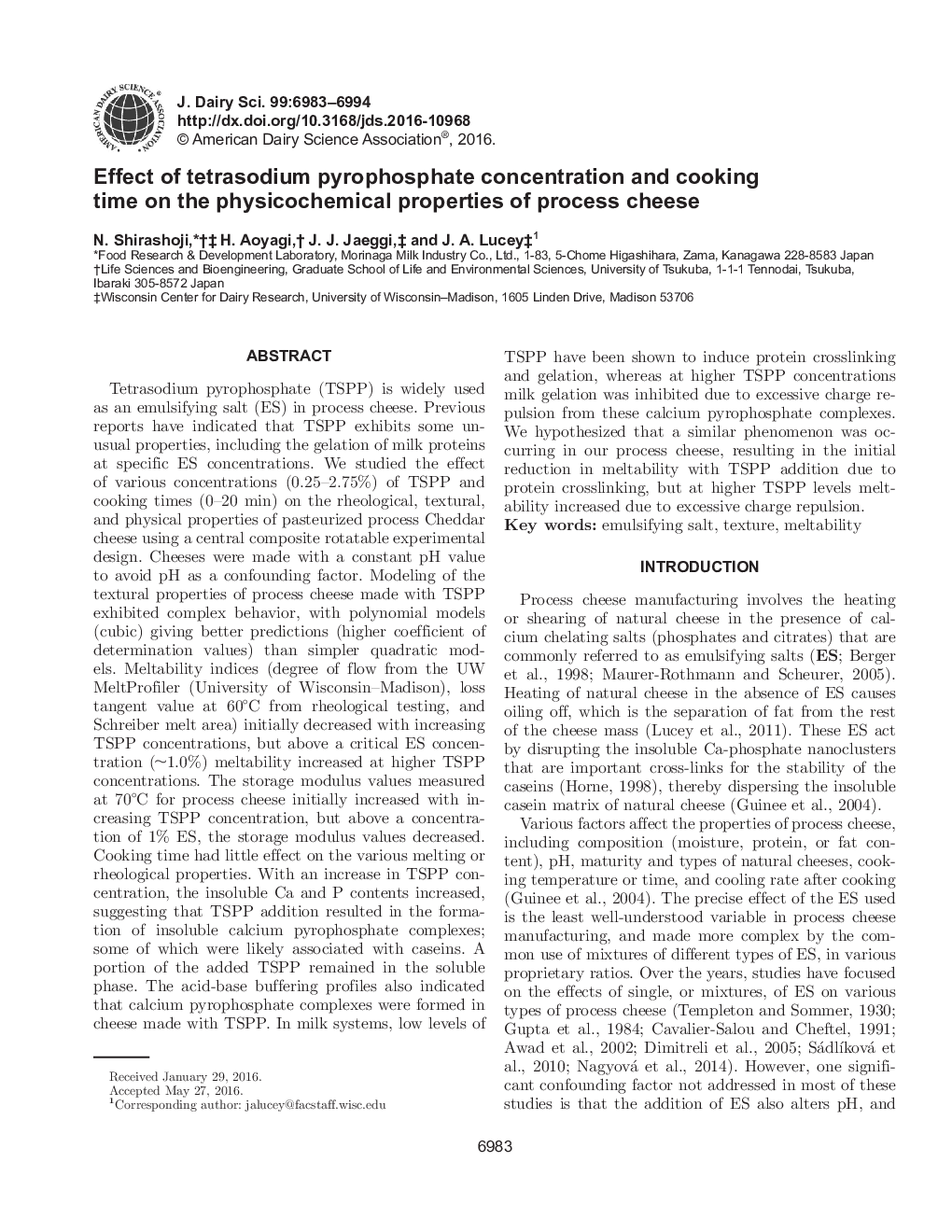| کد مقاله | کد نشریه | سال انتشار | مقاله انگلیسی | نسخه تمام متن |
|---|---|---|---|---|
| 5542810 | 1402523 | 2016 | 12 صفحه PDF | دانلود رایگان |
عنوان انگلیسی مقاله ISI
Effect of tetrasodium pyrophosphate concentration and cooking time on the physicochemical properties of process cheese
ترجمه فارسی عنوان
تاثیر غلظت تتراسیدیوم پیرروفسفات و زمان پخت بر خواص فیزیکوشیمیایی پنیر فرآوری شده
دانلود مقاله + سفارش ترجمه
دانلود مقاله ISI انگلیسی
رایگان برای ایرانیان
کلمات کلیدی
امولسیون نمک، بافت، ممتاز بودن،
موضوعات مرتبط
علوم زیستی و بیوفناوری
علوم کشاورزی و بیولوژیک
علوم دامی و جانورشناسی
چکیده انگلیسی
Tetrasodium pyrophosphate (TSPP) is widely used as an emulsifying salt (ES) in process cheese. Previous reports have indicated that TSPP exhibits some unusual properties, including the gelation of milk proteins at specific ES concentrations. We studied the effect of various concentrations (0.25-2.75%) of TSPP and cooking times (0-20 min) on the rheological, textural, and physical properties of pasteurized process Cheddar cheese using a central composite rotatable experimental design. Cheeses were made with a constant pH value to avoid pH as a confounding factor. Modeling of the textural properties of process cheese made with TSPP exhibited complex behavior, with polynomial models (cubic) giving better predictions (higher coefficient of determination values) than simpler quadratic models. Meltability indices (degree of flow from the UW MeltProfiler (University of Wisconsin-Madison), loss tangent value at 60°C from rheological testing, and Schreiber melt area) initially decreased with increasing TSPP concentrations, but above a critical ES concentration (~1.0%) meltability increased at higher TSPP concentrations. The storage modulus values measured at 70°C for process cheese initially increased with increasing TSPP concentration, but above a concentration of 1% ES, the storage modulus values decreased. Cooking time had little effect on the various melting or rheological properties. With an increase in TSPP concentration, the insoluble Ca and P contents increased, suggesting that TSPP addition resulted in the formation of insoluble calcium pyrophosphate complexes; some of which were likely associated with caseins. A portion of the added TSPP remained in the soluble phase. The acid-base buffering profiles also indicated that calcium pyrophosphate complexes were formed in cheese made with TSPP. In milk systems, low levels of TSPP have been shown to induce protein crosslinking and gelation, whereas at higher TSPP concentrations milk gelation was inhibited due to excessive charge repulsion from these calcium pyrophosphate complexes. We hypothesized that a similar phenomenon was occurring in our process cheese, resulting in the initial reduction in meltability with TSPP addition due to protein crosslinking, but at higher TSPP levels meltability increased due to excessive charge repulsion.
ناشر
Database: Elsevier - ScienceDirect (ساینس دایرکت)
Journal: Journal of Dairy Science - Volume 99, Issue 9, September 2016, Pages 6983-6994
Journal: Journal of Dairy Science - Volume 99, Issue 9, September 2016, Pages 6983-6994
نویسندگان
N. Shirashoji, H. Aoyagi, J.J. Jaeggi, J.A. Lucey,
